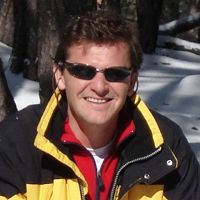Rasmussen et al., 2011
An open system framework for integrating critical zone structure and function.
Rasmussen C., Troch P.A., Chorover J., Brooks P., Pelletier J., and Huxman T. (2011)
Biogeochemistry 102(1-3): 15-29
-
Catalina-Jemez, INVESTIGATOR
-
Catalina-Jemez, INVESTIGATOR
-
Catalina-Jemez, INVESTIGATOR
-
Catalina-Jemez, INVESTIGATOR
-
Catalina-Jemez, INVESTIGATOR
Abstract
The “critical zone” includes the coupled earth surface systems of vegetation, regolith and groundwater that are essential to sustaining life on the planet. The function of this zone is the result of complex interactions among physical, chemical and biological processes and understanding these interactions remains a major challenge to earth system sciences. Here we develop an integrated framework based on thermodynamic theory to characterize the critical zone as a system open to energy and mass fluxes that are forced by radiant, geochemical, and elevational gradients. We derive a statement that demonstrates the relative importance of solar radiation, water, carbon, and physical/chemical denudation mass fluxes to the critical zone energy balance. Within this framework we use rates of effective energy and mass transfer [EEMT, W m−2] to quantify the relevant flux-gradient relations. Synthesis of existing data demonstrates that variation in energetics associated with primary production and effective precipitation explains substantial variance in critical zone structure and function. Furthermore, we observe threshold behavior in systems that transition to primary production predominance of the energy flux term. The proposed framework provides a first order approximation of non-linearity in critical zone processes that may be coupled with physical and numerical models to constrain landscape evolution.
Citation
Rasmussen C., Troch P.A., Chorover J., Brooks P., Pelletier J., and Huxman T. (2011): An open system framework for integrating critical zone structure and function. Biogeochemistry 102(1-3): 15-29 . DOI: 10.1007/s10533-010-9476-8
 This Paper/Book acknowledges NSF CZO grant support.
This Paper/Book acknowledges NSF CZO grant support.
Explore Further





